Technical Sergeant Percy Melvin (Pat) Zimmerman
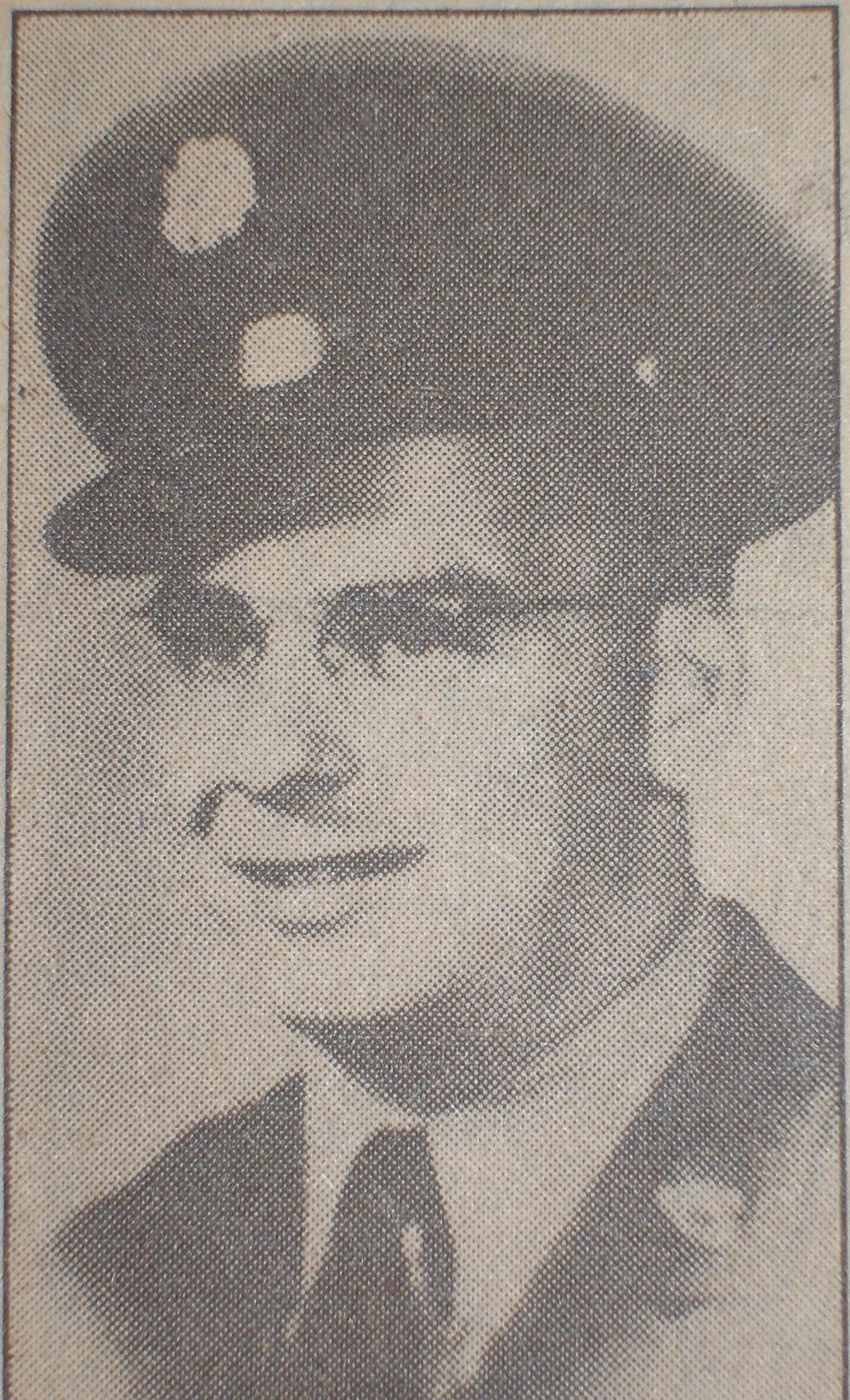
- Unit: 29th Infantry Division, 175th Infantry Regiment
- Service Number: 36165497
- Date of Birth: January 3, 1919
- Entered the Military: January 9, 1942
- Date of Death: June 8, 1944
- Hometown: Monroe, Michigan
- Place of Death: near Cardonville, France
- Award(s): Purple Heart
- Cemetery: Plot G, Row 24, Grave 26. Normandy American Cemetery, Colleville-sur-Mer, France
Mentored by Mr. Adam Sakel
Niedermeier Center for Education
2013-2014
Early Life
Born on January 3, 1919, Percy Melvin (known as Pat) Zimmerman was the fifth of nine children born in Pennsylvania to Mary and Chalmer Zimmerman. The family moved from Saxton, Pennsylvania, to Monroe, Michigan, in 1929. They settled into 720 O’Brien Street and joined the First Evangelical Church.
Zimmerman was athletic in high school. He participated in intramural sports and varsity track. In 1936, as a senior, he was captain of the Monroe High School track team. He broke several records as he led his team to an undefeated season and state championship. When Jesse Owens came to town, Zimmerman put his spikes back on to represent Monroe and beat the Olympian with the aid of a five-yard head start. After a long battle with Bright’s disease, Zimmerman lost his mother, tempering these athletic victories.
After graduation, Zimmerman followed his father and brothers into skilled industrial work. However, unlike his brothers working for Consolidated Paper, he went to work for the Monroe Auto Equipment Company.
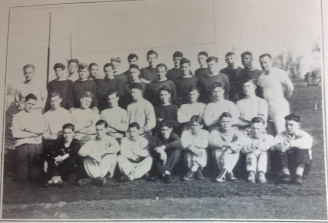
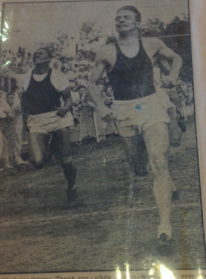
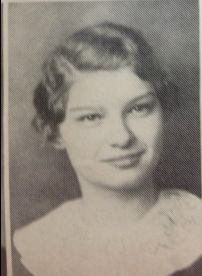
Homefront
Monroe, Michigan
A month after the attack on Pearl Harbor, Zimmerman left Monroe, Michigan, to begin life as a soldier at Fort Custer, Michigan. His life was changing rapidly, but so was his community. Monroe had several companies that provided the more prominent automobile manufacturers with parts and services. Monroe companies now retooled to fuel the engine that drove the arsenal of democracy in Detroit. Zimmerman’s former employer, the Monroe Auto Equipment Company (Monroe Shocks), began converting production before America was attacked. At first, they made shock absorbers for tanks, jeeps, and trucks. As the war continued, they manufactured 20mm shell casings, practice rocket motors, and tank seats.
To meet the production schedule, women joined the men on the factory floor. By September, the company received the Army-Navy E Award, recognizing the quality and quantity of the war materials it produced. In addition to being hard at work, all the employees pledged ten percent of their salary to purchase war stamps and bonds.
Other companies in town also pulled their weight. Monroe Steel Castings produced a wide range of parts that made their way to Detroit factories, and Woodall Industries produced the fuselage for the Navy’s carrier fighter, the Corsair. Some of those finished fighters were being flown at the rapidly constructed Newport Naval Air Station, a short distance outside of town. The 480-acre site provided field carrier landing practice and a location for cadet’s first solo flights. Since the war began, the county organized scrap drives, individual and corporate victory gardens, and various bond and stamp sales. By the summer of 1943, rationing was in full swing. Local organizations arranged for a two-person Japanese submarine captured at Pearl Harbor to be displayed to spur the next wave of patriotic investment. For the purchase of a $.25 war stamp, individuals could inspect the vessel more closely. More than 1,500 residents toured the vessel during the three-hour stop before the sub moved on to Detroit.
While the war was ending in Europe, many German and Italian prisoners of war arrived at temporary camps in Monroe County during 1945 to assist with agricultural production. These POWs returned in 1946 before the camps were closed after the fall harvest. Gradually servicemen returned, women left the factories for home, and Monroe companies hurried to resume producing civilian goods to meet the needs of a triumphant America.
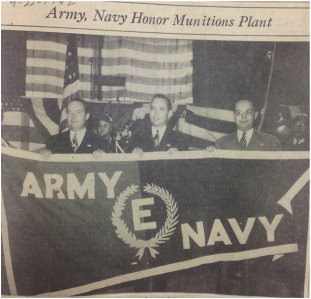
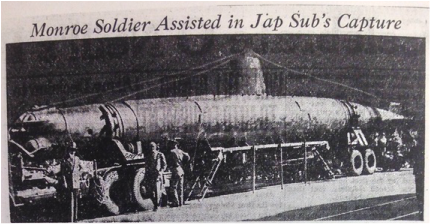
Military Experience
Zimmerman was summoned to serve in 1942. He was inducted into the U.S. Army at Fort Custer, Michigan, near Battle Creek, and then sent on to Camp Wolters, Texas, for basic training.
He returned to Monroe on leave in July 1942 and married his high school classmate, Jeanette Cramer. After their marriage at the Trinity Lutheran Church, Zimmerman returned to Texas, and Jeanette continued to reside with her parents in Monroe. He was assigned to the 29th Infantry Division and participated in the pre-deployment training at Camp Blanding, near Jacksonville, Florida. He departed with the division from New York in 1942 on the HMS Queen Elizabeth.
D-Day Mission
A year after being deployed to England as part of the 29th Infantry Division, Zimmerman was awarded the Good Conduct medal. He received a rapid promotion and was second-in-command of his platoon by D-Day. As part of the 175th Infantry Regiment, Zimmerman was part of the division’s floating reserve. His regiment remained aboard transports off Omaha beach on June 6, 1944.
On June 7, Zimmerman stepped off LST-538 onto Omaha Beach, east of Vierville Draw. Hours after landing, the 175th Infantry Regiment moved through Vierville to Gruchy and then on toward Isigny-sur-Mer. In the early evening of June 8, Zimmerman’s battalion met heavy resistance when it attacked a radar station near Cardonville. Zimmerman was killed during the encounter.
His wife, Jeanette, received word of her husband’s death precisely two years after they married. In 1949, she married Donald Householder. A member of Trinity Lutheran Church and the VFW Erie Post Ladies Auxiliary, she passed away on March 3, 2009.
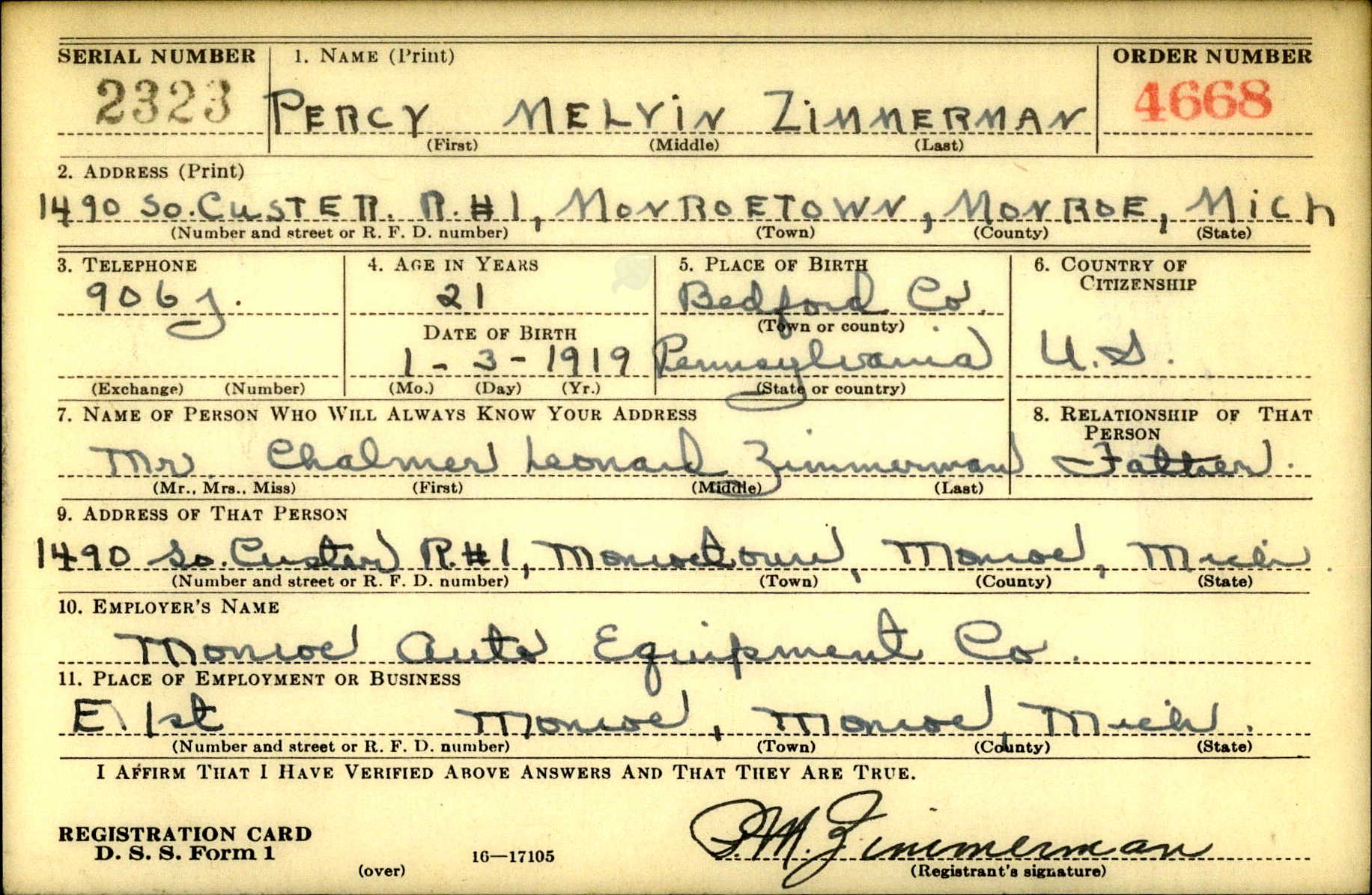
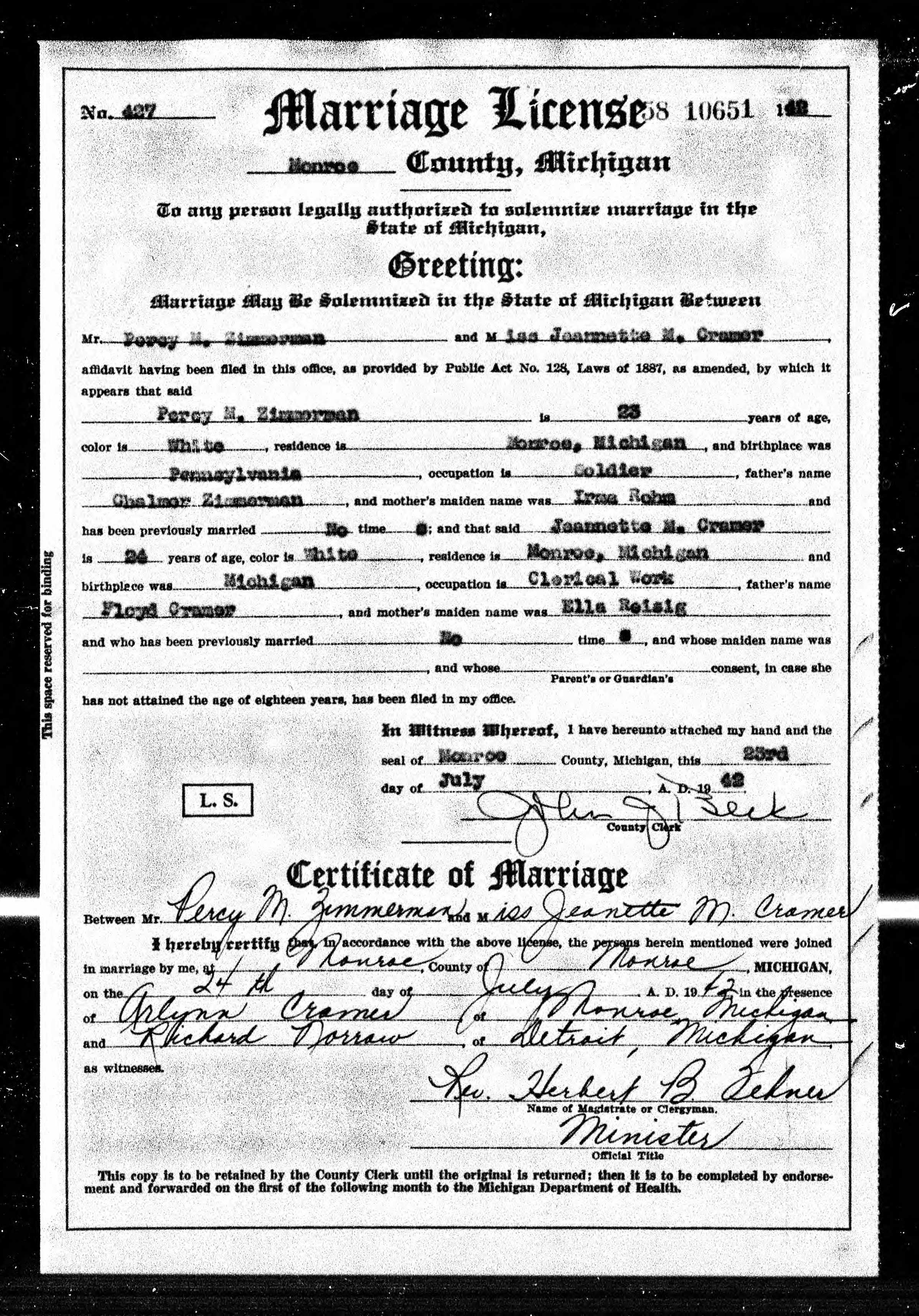
Eulogy
Percy Zimmerman rests here, at Normandy American Cemetery, at the request of his wife, Jeanette, and younger brother, Blaine. This site is a place that is peaceful and well cared for, a place where his service is respected.
Zimmerman was a young man of strong character and a natural leader. He captained his high school track team to a state championship. After high school, he organized and led a softball team that rarely lost.
The U.S. Army saw that Zimmerman was not only hardworking but had the skills to bring men together. In England, he earned rapid promotions. Zimmerman had no illusions about the challenges that faced him. He urged his brother to do his best to get himself reassigned to a heavy weapons company, so he was a little further from the front.
On D-Day, Zimmerman was part of the 29th Infantry Division’s floating reserve, which followed the assault waves and expanded the beachhead. His regiment landed near Vierville-sur-Mer. Sergeant Percy Zimmerman was killed on June 8, leading part of his platoon to destroy a German radar station. His wife, Jeanette, learned of Percy’s death on June 28, their anniversary. Pat, I remember your sacrifice, and you will never be forgotten.
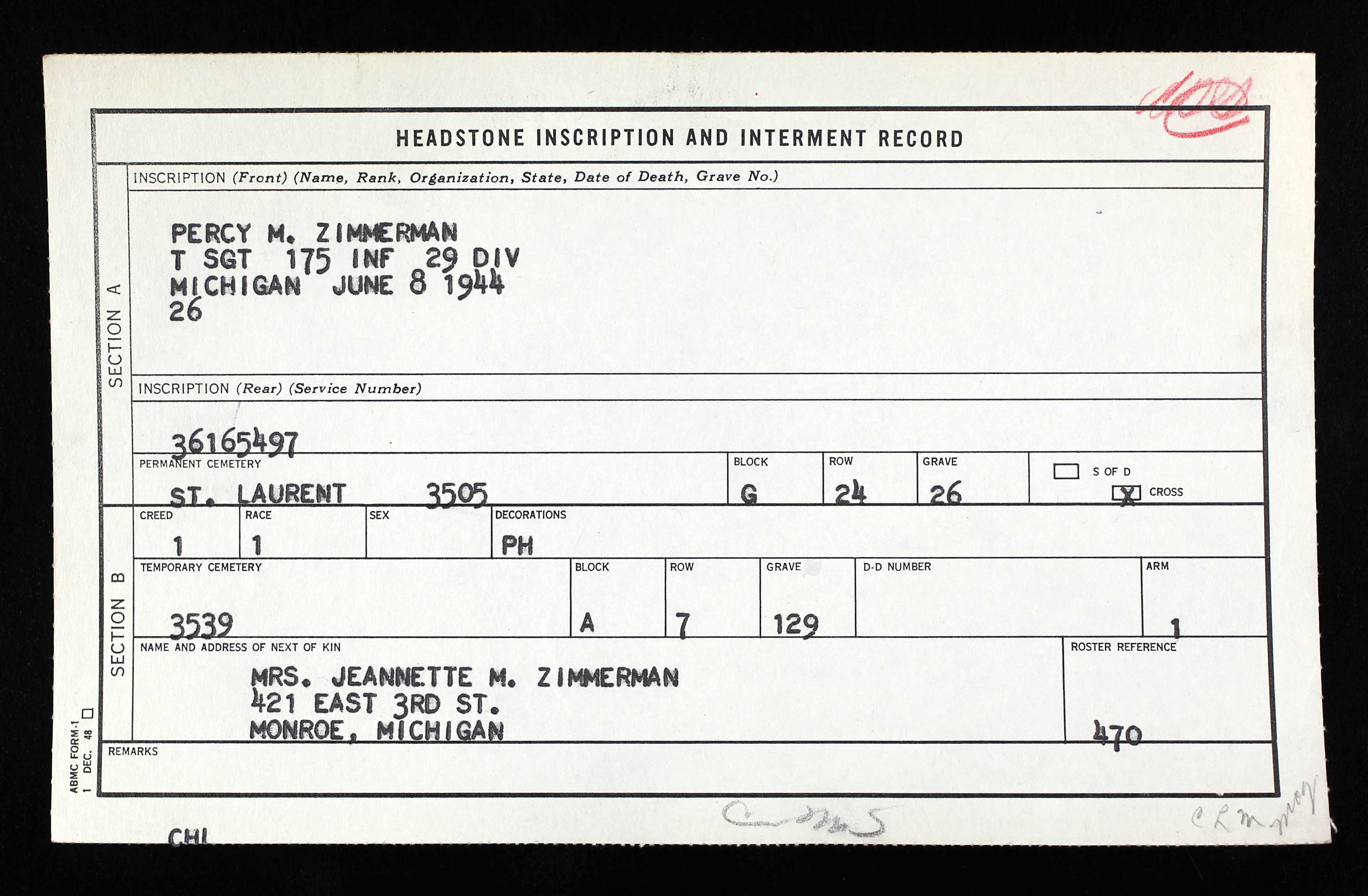
Reflection
This experience affected me in more ways than one. When I first applied with my teacher, I didn’t think I would learn anything that I didn’t already know about D-Day. Now, thanks to some fantastic people, I know more about D-Day and World War II than most people. I got to read first-hand accounts about people’s activities and lives during WWII. As a group, we discussed our soldiers and the tactics they used. We even had some amusing debates.
When I saw the cemetery, it was like a white ocean. It was then that I realized what true sacrifice was. When I first started researching Percy Zimmerman, I looked at it as another research project until I learned more about him. Then I realized it was bigger than just some project. I was scrounging for information about a hero who deserves to be remembered and honored. He was one of the hundreds of thousands of men who became heroes when they had never intended to do so. He died for others in a war that many did not want. Remembering men such as him is essential because they give the next generations someone to aspire to, respect, and never forget that freedom isn’t free. Getting to know a man who was just as close to my age but gave his life to save others gives people a reality check. Getting to know the personal stories in history brings it home.
Bibliography
Primary Sources
“175th Infantry Regiment After Action Report (June 7-9, 1944) [transcribed].” D-Day Overlord. Accessed March 12, 2021. www.dday-overlord.com/en/battle-of-normandy/after-action-reports/29th-infantry/175th-infantry-regiment.
After Action Report – June 1944; 329 INF (175) 0.3; World War Two, 29th Infantry Division, 175th Regiment; Record Group 407, Stack Area 270, Box 7480; National Archives at College Park, MD.
“Army, Navy Honor Munitions Plant.” Monroe Evening News [Monroe, Michigan], September 22, 1942. Monroe County Museum Archives.
“Chalmer Zimmerman Sr.” Obituary. Monroe Evening News [Monroe, Michigan], February 21, 1946.
Cheap, Laura. Scrapbook Collection, Volumes 8-10. Monroe County Museum Archives, Monroe, Michigan.
Donald S. Boyle Collection. Veterans History Project, American Folklife Center, Library of Congress (AFC/2001/001/10587). memory.loc.gov/diglib/vhp/bib/10587.
Donald M. McKee Collection. Veterans History Project, American Folklife Center, Library of Congress (AFC/2001/001/9783). memory.loc.gov/diglib/vhp/bib/9783
Field Order #1 “Neptune;” 329-INF (175)-3.9; World War Two, 29th Infantry Division, 175th Regiment; Record Group 407, Stack Area 270 Box 7542; National Archives at College Park, MD.
George E. Mazeika Collection. Veterans History Project, American Folklife Center, Library of Congress (AFC/2001/001/48464). memory.loc.gov/diglib/vhp/bib/48464.
George H. Weber Collection Veterans History Project, American Folklife Center, Library of Congress (AFC/2001/001/51). memory.loc.gov/diglib/vhp/bib/51.
Jack Cuthbert Collection. Veterans History Project, American Folklife Center, Library of Congress (AFC/2001/001/10593). memory.loc.gov/diglib/vhp/bib/10593.
James C. McElroy Collection. Veterans History Project, American Folklife Center, Library of Congress (AFC/2001/001/9782). memory.loc.gov/diglib/vhp/bib/9782.
Jeanette Cramer. Photograph. 1936. Lotus Leaf [Monroe High School Yearbook].
“Jeanette Householder.” Obituary. Monroe Evening News [Monroe, Michigan], March 3, 2009.
John M. Corkran Collection. Veterans History Project, American Folklife Center, Library of Congress (AFC/2001/001/10591). memory.loc.gov/diglib/vhp/bib/10591.
Journal and File – 175th Inf. Reg. – June 1944; 329 INF (175) 0.7 (13497); World War Two, 29th Infantry Division, 175th Regiment; Record Group 407, Stack Area 270 Box 7543; National Archives at College Park, MD.
Kenneth Earle Marcotte Collection. Veterans History Project, American Folklife Center, Library of Congress (AFC/2001/001/64521). memory.loc.gov/diglib/vhp/bib/64521.
Lotus Leaf. Monroe High School Yearbook. 1935. Local History Collection. Ellis Branch, Monroe County Library System, Monroe, Michigan.
Lotus Leaf. Monroe High School Yearbook. 1936. Local History Collection. Ellis Branch, Monroe County Library System, Monroe, Michigan.
“Mary Zimmerman.” Obituary. Monroe Evening News [Monroe, Michigan], April 9, 1936.
Michigan. Monroe County. 1930 U.S. Federal Census. Digital Images. ancestry.com.
Michigan. Monroe County. 1940 U.S. Federal Census. Digital Images. ancestry.com.
Monroe Automotive Equipment Company. Clipping file. Monroe County Museum Archives, Monroe, Michigan.
Monroe City Directory (1938-1943). Local History Collection. Ellis Branch, Monroe County Library System, Monroe, Michigan.
Monroe County World War II. Clipping file. Monroe County Museum Archives, Monroe, Michigan.
Monroe High School track team. Photograph. 1936. Lotus Leaf [Monroe High School Yearbook].
“Monroe Soldier Assisted in Jap Sub’s Capture.” Monroe Evening News [Monroe, Michigan], July 7, 1943. Monroe County Museum Archives.
Monroe Telephone Directory (1937-1940). Local History Collection. Ellis Branch, Monroe County Library System, Monroe, Michigan.
Pennsylvania. Bedford County. 1920 U.S. Federal Census. Digital Images. ancestry.com.
“Percy Zimmerman.” Obituary. Monroe Evening News [Monroe, Michigan], July 25, 1944.
Percy M. Zimmerman and Jeanette M. Cramer. Michigan Marriage Records, 1867-1952. Digital Images. ancestry.com.
Percy Zimmerman racing Jesse Owens. Photograph. c.1936. Monroe County Museum Archives.
Percy M. Zimmerman. Headstone and Interment Records for U.S. Military Cemeteries on Foreign Soil, 1942-1949. Digital Images. ancestry.com.
Percy M. Zimmerman. World War II Army Enlistment Records, 1938-1946. ancestry.com.
Percy M. Zimmerman. World War II Draft Cards Young Men, 1940-1946. Digital Images. ancestry.com.
Prisoner of War Camps Local / Relocation Centers. Clipping file. Monroe County Museum Archives, Monroe, Michigan.
Temporary Grave Listing, Soldier #36165497, T/Sgt.; Folder #107; page 52, Entry 1721; Office of the Quartermaster General, Record Group 92, Box 239; National Archives at College Park, MD.
Temporary Grave Listing, Soldier #36165497, Plot A, Sheet 1 of 1; Column 7, Row 12, Office of the Quartermaster General, Record Group 92, Folder #3539; National Archives at College Park, MD.
Thomas S. Mithen, Jr. Collection. Veterans History Project, American Folklife Center, Library of Congress (AFC/2001/001/4978). memory.loc.gov/diglib/vhp/bib/4978.
Zimmerman, Blaine. Defining Moments Manuscript. Monroe County Museum Archives, Monroe, Michigan.
Secondary Sources
Atkinson, Rick. The Guns at Last Light: The War in Western Europe, 1944-1945. New York: Henry Holt, 2013.
Ambrose, Stephen E. D-Day, June 6, 1944: The Climactic Battle of World War II. New York: Touchstone, 1994.
Balkoski, Joseph. Beyond the Beachhead: The 29th Infantry Division in Normandy. Mechanicsburg: Stackpole Books, 1999.
Beevor, Antony. D-Day: The Battle for Normandy. London: Penguin Books, 2009.
Doubler, Michael D. Closing with the Enemy: How GIs Fought the War in Europe, 1944-1945. Lawrence: University of Kansas Press, 1994.
Eisenhower, Dwight D. Crusade in Europe. New York: Doubleday and Company, 1948.
Ewing, Joseph. 29 Let’s Go!: A History of the 29th Infantry Division in World War II. Washington: Infantry Journal Press, 1948.
Kershaw, Alex. The Bedford Boys: One American Town’s Ultimate D-Day Sacrifice. Cambridge: Da Capo Press, 2003.
Meade Jeff. “New Jesse Owens biopic has tied to Monroe sports history.” Monroe News, February 21, 2016. www.monroenews.com/article/20160221/sports/160229931.
“Percy M. Zimmerman. American Battle Monuments Commission. Accessed March 12, 2021. www.abmc.gov/decedent-search/zimmerman%3Dpercy.
Pyle, Ernie. Brave Men. New York: Henry Holt, 1944.
“TSgt Percy Melvin “Pat” Zimmerman. Find a Grave. Updated August 8, 2010. Accessed March 11, 2021. www.findagrave.com/memorial/56651805/percy-melvin-zimmerman.

